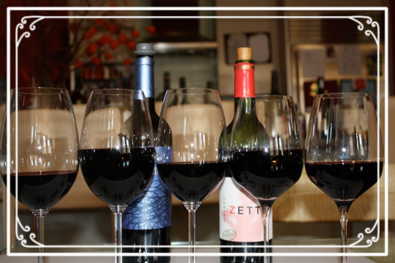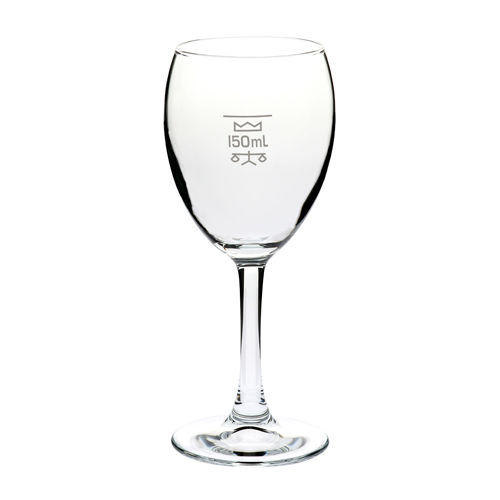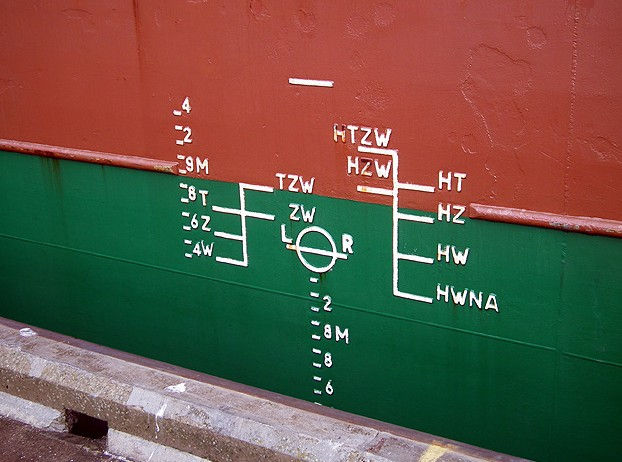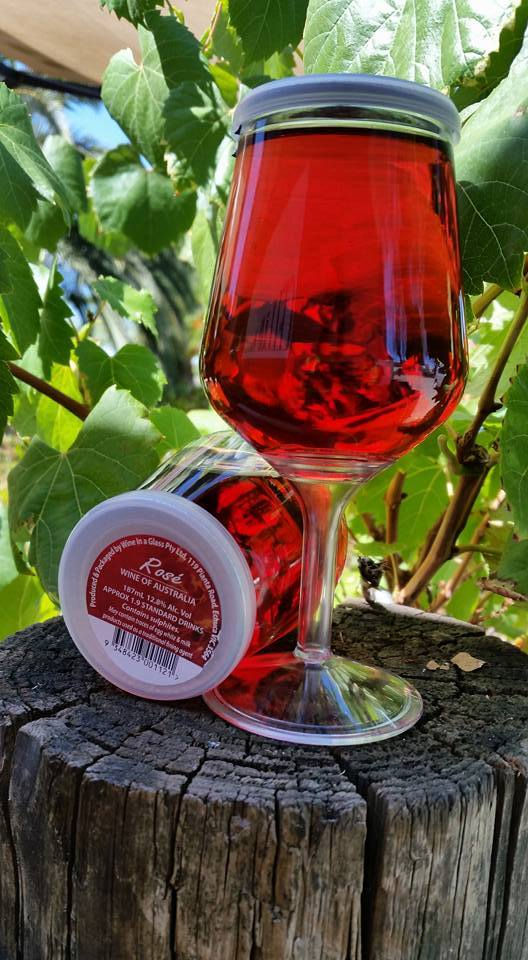Wine by the glass - more to it than you think
- rosemarydearman1
- May 31, 2018
- 7 min read
"Anyone who has been to a bar or restaurant and ordered wine by the glass knows that how much, or how little, you get often depends on the generosity of the venue, or in some cases, how sweetly you smile at the bartender." Rachel Wells - Good Food in The Age

Last week's Weekend AFR had an intriguing article which I mentally, but not literally filed away for a blog post. It was about wine by the glass and how even high end wines are now being served by the glass to customers, and not just as a wine matching deal that high end restaurants often offer.
Because I had not literally filed away the article, I had to search for it, and initially couldn't find it, but I did find a lot of interesting stuff which I shall come to. Armed with my information I had one last go and found it online, whereupon I realised that what that article was talking about was different to what I had found today. So there's rather more to talk about than I thought.
I'll begin with the issues raised by the Good Food article from which today's leading quote is taken. How much wine do you get when you order a glass of something in a restaurant or bar? Well it depends doesn't it? It depends on the size of the glass, the policy of the establishment if there is one - a policy I mean - and maybe on how the bartender is feeling at the time, or how steady a hand he has. The Age randomly chose 10 Melbourne venues where they ordered a glass of the house (or cheapest) shiraz, and then measured how much wine was in the glass. Apparently it varied between 145ml and 190ml, although Cutler & Co. for example serves just 120ml - saved a little by the fact that they actually tell you it's 120ml. on the wine list. The price varied between $7.00 and $11.00 and was not necessarily related to the amount of wine in the glass.
There then followed a discussion of how much was fair - with the general opinion going for 150ml. A so-called 'standard' drink, by the way is 100ml - slightly more if it's low alcohol. And with the new Victorian legislation of .05 alcohol in your blood whilst driving and you automatically lose your licence, that means that we should all be careful.
For not only is it a fairness issue - the wide variety in quantity you get in a glass that is - it's also a safety issue if you are trying not to go over the limit. How on earth do you know how much you have drunk? Mind you if you are drinking from a bottle this is even more difficult because your glass is often filled before it's empty so you have no way of telling.
There's often not much variety in wines by the glass on offer which I suppose is an economic consideration. After all they don't want to be left with lots of half-opened bottles of wine I suppose. Mind you, you could use them in tomorrow's risotto or daube surely?

Recently I have noticed that when buying wine by the glass it is carefully poured to a mark on the glass - most usually the restaurant's logo, and this is indeed what they do in many cases. There is an official 'plimsoll line' (shown at left) and there are talks about mandating this on glasses in restaurants. Which is not favoured by the industry - cost of buying extra glasses - ugly, etc. If there was some way of mandating where the company logo went on the glass, that might be the answer. Mind you, as The Age people found, just because there was a plimsoll line on the glass it didn't necessarily mean that this was adhered too - sometimes there was more, sometimes less. A steady, or unsteady hand, the look in the bartender's eye ...?
In this instance I agree with the industry spokesperson The Age spoke to - the sommelier at Circa who said that the venue should be able to choose how much they put in a glass but it must be clearly stated on the wine list. And I have seen this in a couple of places. A good idea.

And here is an aside. The plimsoll line. How odd I thought - isn't that on ships? I remember them from my days in the docks with my dad. Every boat has a series of lines on the side to indicate how much the ship can be loaded before it is overloaded. The line shows the point at which it is safe - or not.

And as you can see, there are lots of lines - the lines take into account differing conditions, temperatures, roughness of the sea, and doubtless all sorts of of other technical sailing things. I also learnt that we have been putting marks on ships to show the danger level since Ancient Crete with varying degrees of success. Lloyds in London devised the predecessor to the Plimsoll Line which, in various iterations through time and legislation is now more or less standard throughout the world.
It was devised by one Samuel Plimsoll, who was a British MP. He grew up in complete poverty and thus became a fervent social reformer with a particular interest in what he called 'coffin ships' - ships that were overloaded, sank and killed their crews. Hence the Plimsoll line. And no he didn't invent plimsolls (sneakers or runners to you), but in 1920 the makers of the first of this style of shoe named them plimsolls in honour of the line on the boat which they thought resembled the shape of the shoe. Can't quite see that. However, that's apparently how they got their name.
But moving on. There are a number of reasons why we might want to drink wine by the glass. The aforesaid fear of drinking too much being one of them. Generally speaking, until recently that is, the wine by the glass option has been small and relegated to the cheaper wines on the wine list, and also is served straight from the bottle, whether it be at the bar or at the table. However, I gather we are now becoming more knowledgeable about wine and since the introduction of those aforesaid wine matching menus we want to do our own matching. Or we want to compare two or more different wines.
And here we come to technology.
The AFR article talked about wine on tap mostly - like beer. The wine is bought in bulk in huge plastic bladders, decanted into kegs and poured from a tap - just like beer. And no it's not just the cheap stuff. The article quoted the manager of a restaurant group as saying:
"We only work with small, independent [Australian] winemakers, and buying in these relatively huge quantities gives us a lot of autonomy to create well-made, sustainable, organic, biodynamic wines,"
I imagine the winemakers themselves are sought out and made an offer too good to refuse. But apparently the restaurants can offer up to 20 wines this way, which is rather more than your usual wine by the glass selection. So - technology no. 1 - basically your wine cask writ large. And I think that's an Australian invention.
Technology no.2 - the Coravin method. And now that I have watched their video I see that this technology will really only be useful if your wine bottle has a cork - an increasingly diminishing number of wines in Australia. Though not in France.

The idea is that you pierce the cork with a tube, and then extract the wine - the ullage is replaced with an inert gas I believe. Anyway it was mentioned in the AFR article by Nomad - a high end restaurant which can now offer high end wines to their customers, enabling them to match to food and compare with other fine wines to their heart's content and without the bottle having to be finished within a very short space of time. You can do it at home - but I suspect not very useful in Oz. It's a Californian invention. Where else?
The big one that seems to be in use the world over is the By the Glass system. (Nice logo.)
It has an impressive list of customers - Sofitel, Heston Blumenthal (at Heathrow anyway) and very many others. It's Dutch and it looks very posh and is probably most useful in places like hotels, bars and airports as it consists of a large sort of cabinet in which you put your bottles. The wine is then siphoned from the bottle and delivered to your glass. But, try as I may, I cannot find out if this also is really only useful for corked bottles. Is it a similar technology to the Coravin but on a larger scale? Or can you pierce a screw top anyway? I don't know, but it does seem to be the market leader. I even saw one picture of one at a French wine show. These things enable you to sample lots of different wines without spoiling the bottle. Maybe we shall see them in vineyard wine cellars before long.

And of course there are also serve yourself options with this one - pay as you go. Like a gigantic coffee machine but with wine.

And last of all - back at the bottom end - there are various companies selling already filled wineglasses with a kind of plastic lid. A bit downmarket this one I think, mostly used, it seems at things like weddings, conferences, etc. Big events where you have to have a lot of glasses of wine served. Surely it would be just as quick to pour out the wine into glasses as to whip off the lids - and they do look a bit overfull. And think about the extra recycling required here. The lady from Circa. whom I referenced earlier on said she didn't like more than 150ml in her glass, though preferred 100ml because she liked to swirl the wine around to get the aromas. This would not suit.
By the way those high end venues that are using one or more of these technologies in order to be able to offer high end wines by the glass are charging high prices for the privilege - I saw figures of $25.00 to $45.00 per glass as examples, but I bet somewhere you can pay a lot more than that.
It's a growing business. Another way to make money out of us poor wine drinkers. Though I suppose on the plus side it's also a way to try different wines throughout a meal.
Interesting stuff.













Comments